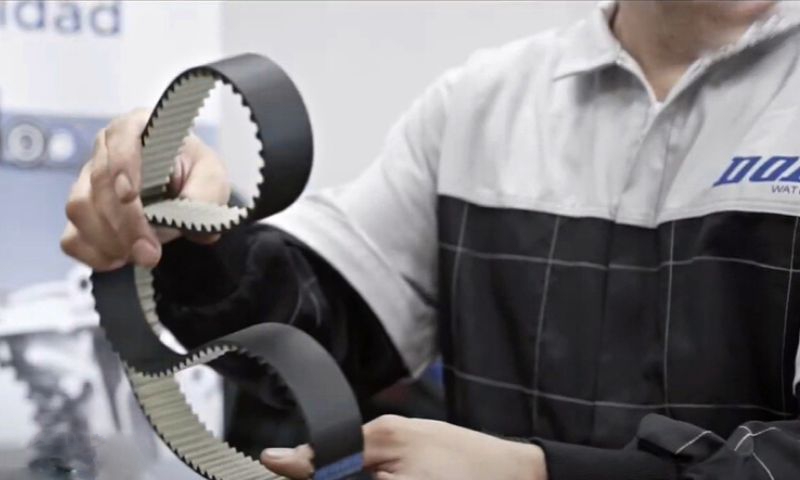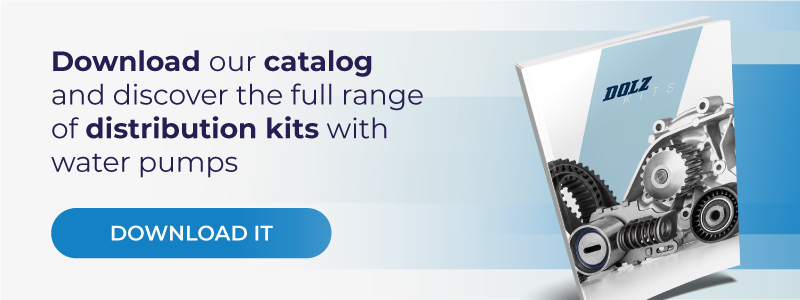Timing belts allow your vehicle’s engine to operate. They are in charge of synchronizing the rotation system of the engine’s camshaft and crankshaft, in order to enable engine valves to open and close at the right time.
These car parts are subject to great forces inside the vehicle’s engine. For this reason, every vehicle that has a timing belt will require a new timing belt replacement at some point during its life. Without a fully functioning timing belt, the car’s engine won’t be able to run properly.
When to replace the timing belt?
Timing belts are strong and highly efficient but being constantly under stress and operating in high heat environments make them impossible to last forever. However, drivers widely forget that timing belts must be replaced on a regular basis. Then, when to replace a timing belt?
The largely depends on the manufacturer and model of each vehicle, so first thing to do is check your owner’s manual for specific recommendations.
In many cases, there might be no apparent indication that a timing belt is becoming worn. Often, it just breaks. That’s why, when it comes to timing belts, prevention is by far the best solution.
Related content: Expert advice: when should you carry out a car timing belt replacement
5 warning signs to detect timing belt failure
There are a few warning signs that can help you diagnose when you need a new timing belt, but it is important to remember that prevention is the key to an optimal car maintenance, as there are no certain clues to indicate a worn belt that may be close to snapping.
Listed below are five key signs to be aware of that may help you determine if it’s time to check and get a new timing belt.
1. Engine misfires
Timing belts run through a system of pulleys that operate both the camshaft and the crankshaft. The teeth they use for this are meant to grip and move smoothly, but if the timing belt starts to wear out, it may create a repetitive clicking or ticking sound coming from inside the engine.
2. Smoke after starting the vehicle’s engine
Belt wear and stretching damages the catalyst, as the fuel is not completely burned in the chambers due to an incorrect composition of mixture fuel. That means: all the fuel that has not been consumed is directed to the exhaust system. If you hear a clicking noise when starting the engine and see black smoke coming from the vehicle’s exhaust pipe, this indicates an incorrect fuel composition that may be due, among many others, to damage to the timing belt.
3. Difficulty starting
A worn timing belt will affect your engine’s starting speed as it is attached to the pulleys that drive the crankshaft. Eventually, the belt can slip on the camshaft drive causing the engine cylinder to open and close at the wrong time.
The stretching or wear of the timing belt will cause it to skip one or more teeth, and therefore as a result the engine ignition is lengthened, in addition, as we have already mentioned, the jumps or slips of the belt cause the desynchronization of the engine.
4. Belt appearance
If we are inspecting our vehicle, or we are about to make a visit to the garage, the first sign that will indicate that the belt is worn is its appearance. It is possible to see small cracks throughout the entire piece. If the cracks are enlarged, then the internal threads of the cracks can be seen. In addition, another sign is the detachment of small pieces or fragments of the belt material that will end up falling inside the entire engine.
5. Loss of voltage
Another sign of advanced belt wear is high elongation. When this occurs, there is a loss of tension which makes the deflection force of the belt less. This will lead to belt slipping in the first place or worse, belt dropping during engine operation. Belt slippage or skipping will lead to engine out of sync and this can lead to piston/cam collision resulting in catastrophic engine failure.
DOLZ TIP:
Timing belts must be in good shape order for your car to properly start. If your belt has been damaged, you will most likely hear the starter engage when you turn your key but the engine will not ignite.
In case your timing belt is broken inside, it won’t be possible for your engine to start working, since your timing belt is what engages your crank and camshaft, it won’t turn over. If this happens in addition to any of the above warning signs, it is probably that the problem is due to a snapped timing belt.
Calling a professional for advice is the only sensible solution here. If the problem is caused by the timing belt, there is a high chance it results in the damage of other engine compartments, so the situation could be rather serious.
Keep reading: Things to consider when choosing a timing belt kit
Dolz Timing Belt Kit, the best replacement option
The replacement of the water pump or the timing belt are two of the most common operations in a garage. In our experience, it is much more cost-effective and safer to replace them for preventive reasons than to wait for them to break down and stop working altogether.
In addition, by replacing these two components together, you will save on labor, reduce the number of visits to the workshop and will improve both the quality and safety of the intervention.
DOLZ offers premium timing belts; 100% tested and equivalent to OE:
- Timing belt: resistant to changes in temperature, water and oil, thus ensuring an optimized durability.
- Idlers: high-quality raw materials and grease to ensure the highest efficiency.
- Water pump: manufactured with a silicon carbide seal. It is designed following the original specifications
Do you need to replace your timing belt? And the water pump? Contact us to know more about our full timing belt kits, they include all necessary components for an optimum timing belt replacement.


